
Sunset in the Mediterranean. Orange, reddish and purple tones surround Sa Pedrera of Cala d’Hort. Or, as it is known throughout Ibiza, Atlantis. This mysterious and unique place is an open secret in the Pitiusas, one in which time seems to have stopped and takes us back to the hippie atmosphere of the sixties and seventies. Its fame comes from the rocks that form it, its beauty, its past as a quarry and the steep slope of gravel and dunes that leads to it.
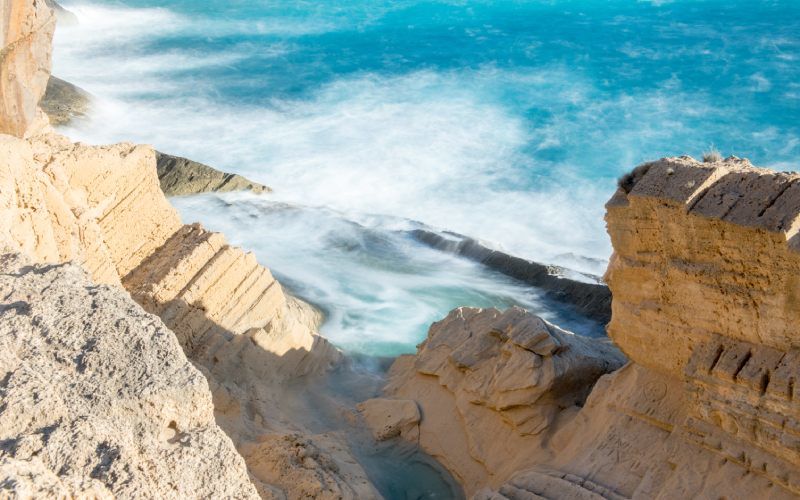
Rock formations and the sea at the Ibizan beach | Shutterstock
Atlantis, that place that Plato captured in the dialogues Timaeus and Critias, seems to have come back to life. Perfect diagonal cuts have created strange structures that are fun to walk and move around on. Below sea level, the hollows created by the rock formations have ended up forming natural pools with warm, greenish waters. This fact, together with blue and crystalline waters with a sandy bottom, make up a curious and surprising landscape, full of mystery. The rich aquatic fauna will delight snorkeling and scuba diving lovers. The crazy in search of thrills and a good jump will also be rewarded.
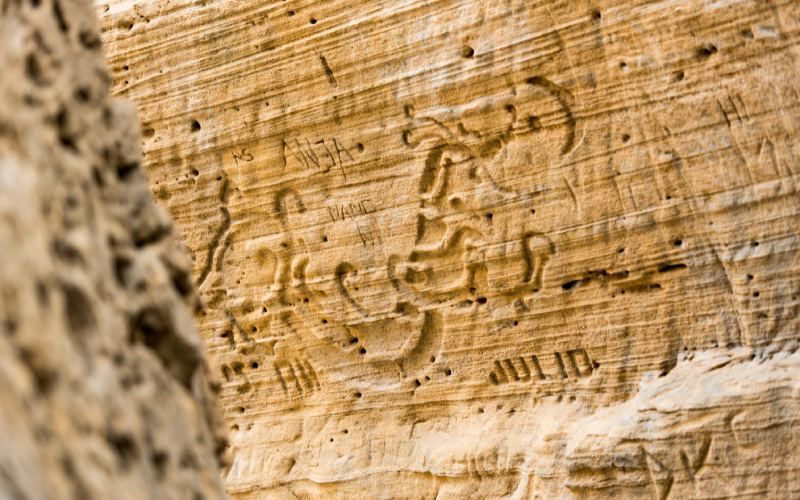
Figures carved in the rock of Sa Pedrera | Shutterstock
A cave with the figure of a Buddha and a large rock in the dune area are a common meeting place for hippies. All along the walls it is possible to contemplate carved figures and small altars, an authentic open-air art gallery. Unfortunately, it must have some downside, and is that it is frequently visited by jellyfish so it will be necessary to take some precautions. Also, Sa Pedrera, this new Atlantis, is located within the Natural Reserve of Cala d’Hort.
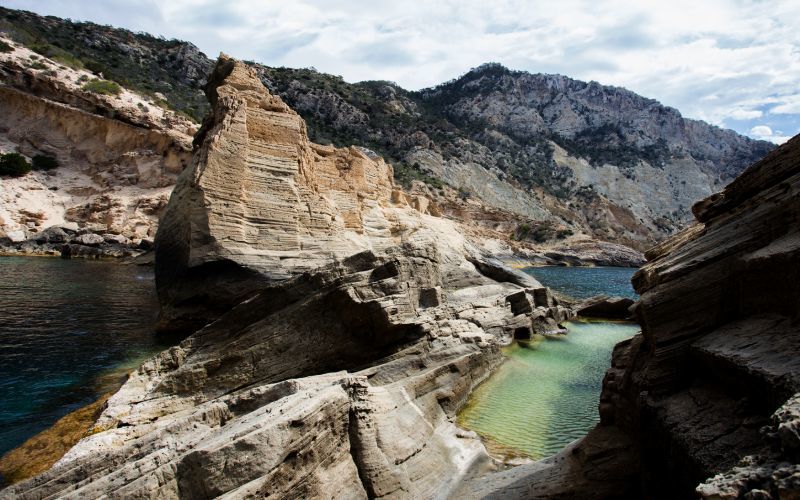
Natural pools of Sa Pedrera | Shutterstock
The strange rock formations of this enclave reveal its origin as a quarry from which much of the sandstone that forms the walls of Dalt Vila and the sixteenth-century castle of Ibiza, both World Heritage Site by Unesco, was extracted. This practice was common at the time. The quarrymen also extracted stone from the islets on the way to Formentera or on the coast of Ses Salines. The sandstone rock of Sa Pedrera was ideal for the ashlars of the corners of the bastions.
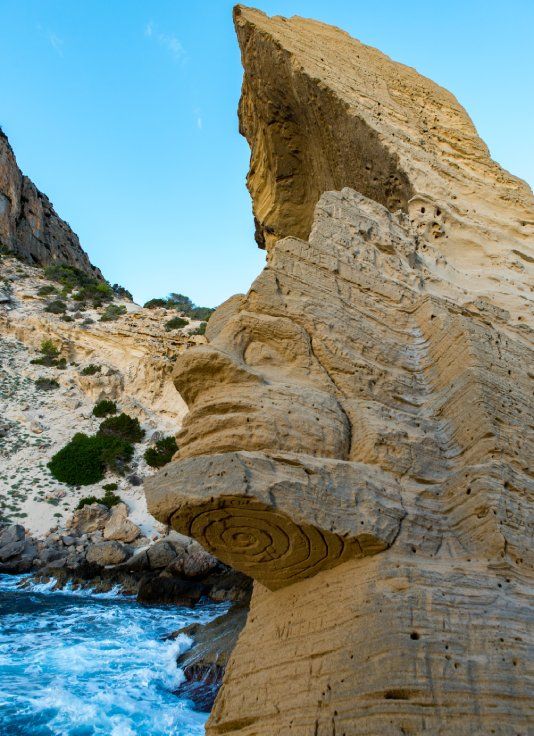
Art in d’Hort cove | Shutterstock
The hippies who came to Ibiza in the 1960s chose the place, among other things, to capture their hallucinogenic art through sculpted figures of fish, Buddhas and, of course, the well-known symbols of peace. These ideologists of love mixed very little with the rest of the population and established their communes in lonely places, inhabiting warehouses, peasants’ houses and caves.
One of the chosen places was found at the foot of Puig d’Es Savinar, below the defense tower that guarded the place from pirate invasions. There they found the remains of this ancient quarry. Its impossible shapes made them believe that at some point they emerged from the bottom of the seas and dragged with them a piece of the palaces of Atlantis. Hence they called it Atlantis. It is the most famous of the unknown beaches of Ibiza.

Pools of Sa Pedrera | Shutterstock
This cove, which is actually neither a cove nor a beach, does not usually appear in the official beach guides of Ibiza. The practice of nudism is common, although the characteristics of the place recommend bringing some towels, mats or any element that allows you to lie down in a more comfortable way. Sunscreen, plenty of water, diving goggles and comfortable shoes are more than necessary since there are no services of any kind to be found in the place. Likewise, it does not have one of the easiest accesses. Therefore, although it is not necessary to be an athlete to get there, it is not a suitable route for those who suffer from vertigo or are in bad physical shape.
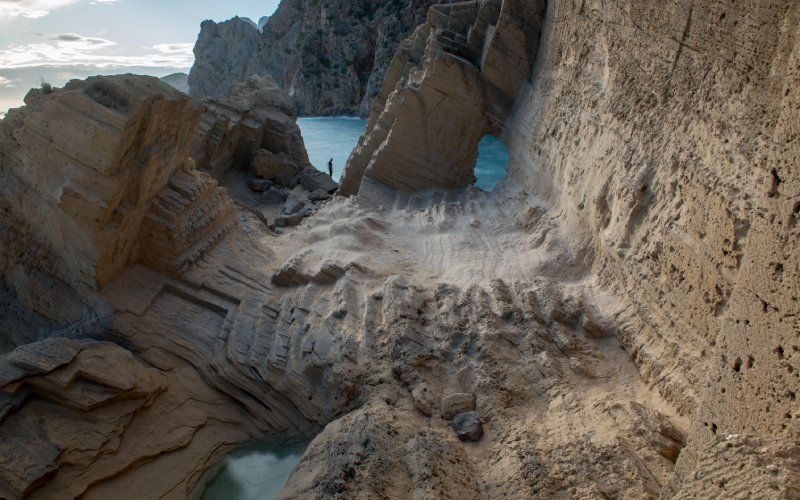
Panoramic view of the Atlantis of Ibiza | Shutterstock
To get there from Sant Josep de Sa Talaia, take the road to Es Cubells. A descent of about two hundred meters along a cliff and through plants ends in a stretch of dunes that is quite a challenge on the way back. In short, about 30 minutes one way and about 45 minutes return. The next watchtower d’Es Savinar is called the Pirate’s Tower after Vicente Blasco Ibáñez’s novel Los Muertos Mandan (The Dead Rule). One of its chapters was located here. From this point you have one of the best views of the islet of Es Vedrà, and it is said that it is the mystery that surrounds it that inspired the artists to decorate the rocks of Atlantis. Sa Pedrera of Cala d’Hort is an authentic marvel for nature lovers.